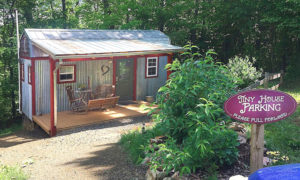I received a request for an article that would discuss aerobic vs. anaerobic activity and the types of feed advantageous for both. This subject matter could develop in many different directions because there are many multi-discipline horses these days. I am hoping to simplify this broad subject in this short article. If you want to chat in depth about this subject, I do welcome phone calls.
All horses use fuel in this order: fat, carbohydrates, protein. We never want to get to the point of using protein for fuel as that would be burning muscle. I will follow up later with an example. Horses that use aerobic energy (with oxygen) use fat for fuel, and horses that use anaerobic energy (without oxygen) use more carbohydrates (metabolism of glucose or glycogen to lactic acid).
A horse’s heart rate of 140 – 150 bpm is considered the anaerobic threshold above which lactic acid is produced from anaerobic metabolism faster that it can be utilized, and that is when lactic acid build-up occurs. Example: If you have ever been to or seen a thoroughbred race, once in while you see a horse pull up before it gets to the third turn. This can be caused by lactic acid build-up — the horse has emptied its fat and carb fuel tank and now depends on muscle burn. The protein fuel burn last only seconds before the horse pulls up. This sounds rather rough, but horses do make full recoveries.
I use this good example in most of my talks. When I am judging a show, I can usually tell what fuel horses are being fed primarily by their afternoon behavior. The day of the show, most folks feed in the early morning, trailer the horse to show grounds, warm up, and then enter the morning classes. The afternoon classes with the same horses provide different behaviors. Many of the horses have emptied their fat fuel tanks (calm energy), and are now relying on their carb fuel tanks (jet fuel), which is like giving a child a candy bar and asking him to be quiet while you are on the phone. All you parents out there know what I mean…
In order to feed your horse properly, you need to be very honest with yourself. We all like to think we really ‘work’ our horses. Are we buying a specific bag of feed because it has an eventer, a barrel racer, a cutting horse, or a hunter/jumper picture on the bag? You really need to think about how many times your horse’s heart rate will get over 140 – 150 bpm for extended amounts of time as well as what percentage of total time it is in aerobic vs. anaerobic activity.
We can group athletic performance into 3 categories. Endurance activity is generally 2 hours or more of low intensity exertion requiring aerobic energy. Mid Distance is generally 1/2 – 2 miles requiring both aerobic and anaerobic energy with 70 – 90% of maximum exertion. Sprinting activity is a minute or less of 100% maximum exertion. Knowing this, you need to ask yourself what the primary use for your horse is.
A thoroughbred race horse, a trotter, a roping horse, and a barrel racer can be in anaerobic phase 3 strides out of the gate. An eventer in good shape can be aerobic for most of the cross country and stadium, using anaerobic energy when the hind is lifting off over a jump, then quickly returning to aerobic until the next liftoff.
FEED TIP: If you can, feed some hay 15 – 30 minutes before the concentrate. Let the hay be a natural buffer before the fat and carbs enter the stomach. The same can be said before a ride as well. What is that old saying? An ounce of prevention…
Adios!!!





















